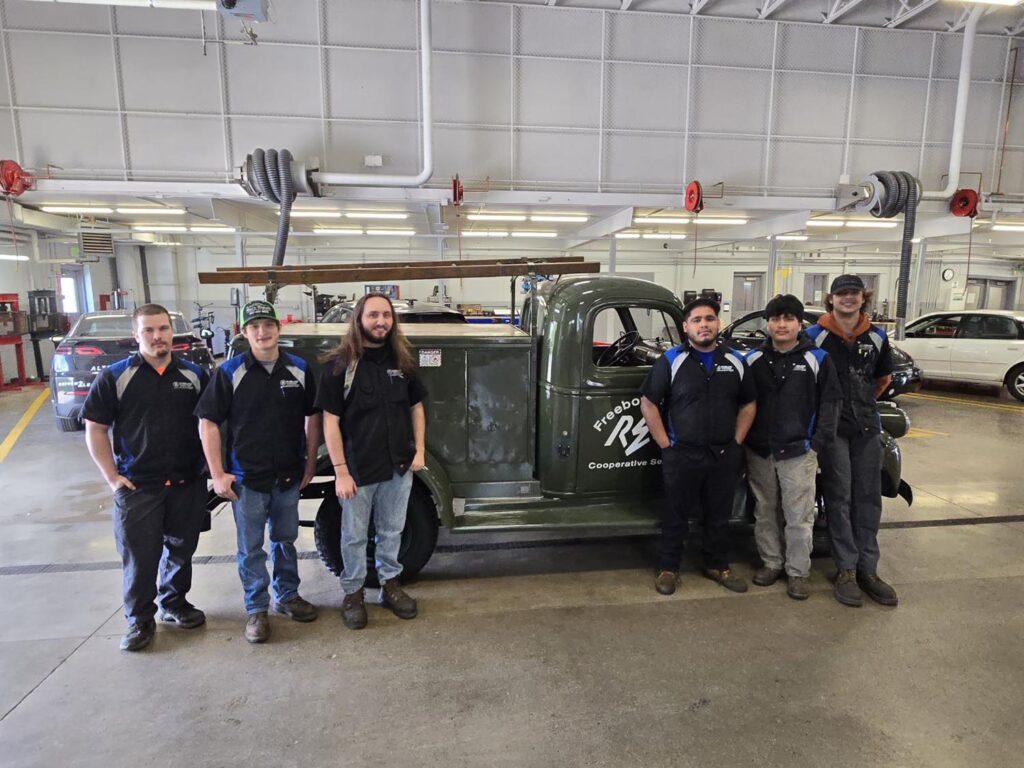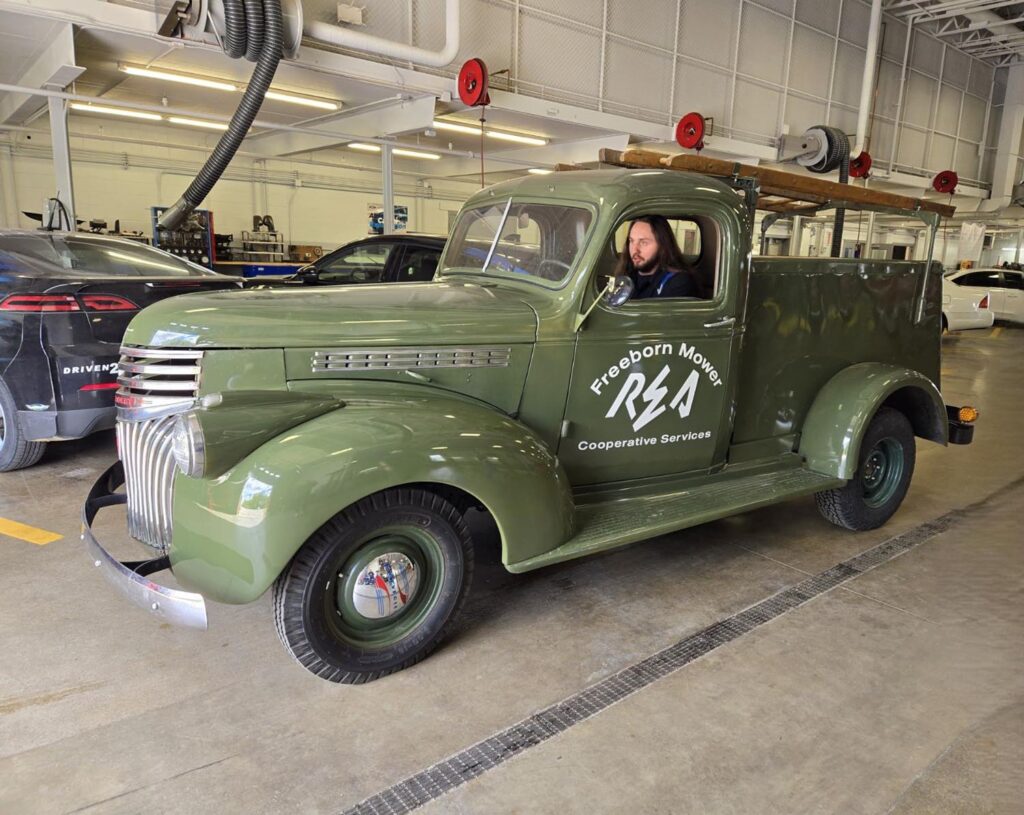
Freeborn Mower Electric Cooperative in southern Minnesota has partnered with the local community college to transform the co-op’s World War II-era work truck into an electric vehicle that will soon make its debut in area parades.
“I think it will show the co-op’s initiative and dedication in looking at new technologies that might eventually benefit our members,” said Jim Krueger, the 18,000-member co-op’s president and CEO.
“Converting this vintage truck to electric shows us bridging the old times to the new times as co-ops adopt the latest innovations.”
The green 1946 Chevy delivery truck was sitting largely unused in a corner of the co-op’s warehouse when employees came up with the idea to turn it electric during a brainstorming session about a year ago, Krueger said.
Mary Nelson, Freeborn Mower’s director of cooperative relations, reached out to Riverland Community College in Albert Lea, where the co-op is also based, to see if the school would be interested in having its automotive technology students work on the project. The co-op also provided $30,000 to cover the cost of the transformation.

Olle Gladso, an automotive technology instructor at the college, and a half-dozen of his students took up the challenge.
“When you take something that old and try to marry it to modern components, there are going to be some problems along the way,” said Gladso, who started working on the truck conversion with his students in August of last year.
“The first thing we had to do was take it apart, remove the old engine, and then start over. It took a while to get all the different parts.”
One of the biggest challenges, he said, was the fact that the replacement transmission was taller than the original one, so it couldn’t be mounted in the same place. That made it necessary to have a longer drive shaft, which was difficult to find.
Despite such obstacles, the students were able to complete the project earlier this month, driving the newly electric truck in the college parking lot for the first time on May 2.
Gladso estimates that the truck—which could only accommodate a limited number of batteries—will have a modest range of about 50 miles when fully charged and will perform well when driven slowly in parades.
“I commend the students for their dedication and persistence,” he said. “They have really grown from this experience, and they have a tremendous sense of accomplishment.”
Now that the co-op has its truck back, it’s looking at ways to give it an exterior makeover to reflect the dramatic overhaul it has undergone on the inside, said Al Stadheim, the co-op’s director of engineering and operations.
The co-op expects the truck to be used in about six parades a year—the Fourth of July parade in Albert Lea and citywide parades in the small communities it serves.
“It’s been about 25 years since the truck has had any paint,” Stadheim said. “We need to decide whether we’re going to wrap it with graphics representing the new co-op logo. We’ll work with a vendor to fix it up. Now that it’s electric, our old truck should be quite the conversation piece.”
Erin Kelly is a staff writer for NRECA.